The week at a glance
- American Black Tern in Oxfordshire
- Little Shearwater off Cornwall
- Possible Yelkouan Shearwaters off Cornwall and Devon
- Flock of Glossy Ibises in County Wexford
- Zitting Cisticola on Jersey
- Good seawatching in southwest England and western Ireland
This was more like it. After a late summer of interesting arrivals which, to be honest, had failed to really ignite too much excitement, the final days of August and the first 48 hours of September provided all sorts of excitement. A decent array of good birds made landfall across Britain and Ireland during the week. The almost constant Atlantic airflow meant that those with a love of seawatching were well catered for, while the wagging tail of the departing Hurricane Bill did (as predicted) produce a number of new arrivals from the New World, including the week's star turn.
The open waters of Farmoor Reservoir in Oxfordshire became the Bank Holiday focus of attention for hundreds of birders, all making their way there to admire the super juvenile American Black Tern that was first noticed, late in the day, on 28th. A crowd was pretty much guaranteed (a decent location, the aforementioned Bank Holiday and the first twitchable British bird for 10 years), but the interest was heightened further by the fact that the American Black Tern was almost always in the same field of view as a Black Tern and, remarkably, a White-winged Black Tern. This trio of terns must be a truly unique occurrence in the birding world — certainly in the Western Palearctic at least — and, as many have mentioned, it must be one of the least admired White-winged Black Terns ever! All three birds remained to 2nd. The taxonomic situation with regard to surinamensis appears to be dormant, with no hint of a split on either side of the Atlantic (indeed the most recent DNA work suggests it lies between European and Russian birds), but those sampling American Black Tern for the first time would have been impressed at just how different the two juvenile "Black Terns" were. The only other English record was the juvenile in October 1999 at Weston-super-Mare (Somerset), with further birds seen in Ireland (the first for the Western Palearctic was found in Dublin just before the bird in Somerset) and also Scotland (one was seen and photographed on South Uist last November).

Black Tern, American Black Tern and White-winged Black Tern. (Photo: Phil Bishop)
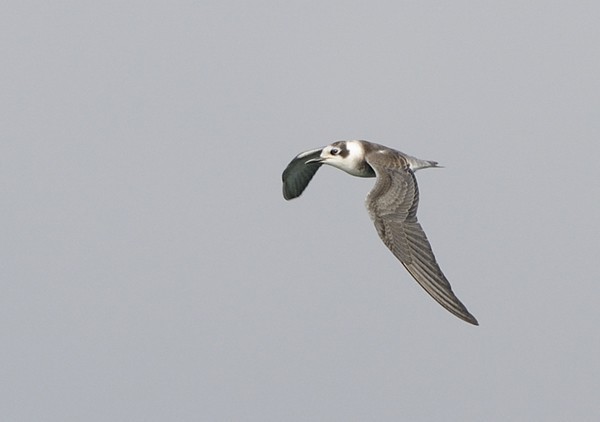
American Black Tern, Farmoor Reservoir, Oxfordshire (Photo: Mike Lawrence)
Before the arrival of the American Black Tern, it was seawatching that was continually making the news. Two Little Shearwaters were reported in the early part of the review period: one was seen for six minutes by just three observers at Pendeen (Cornwall) on 28th (where dozens of people had gathered) and another was noted from Hurlstone Point (Somerset) on 29th. A distant possible was also seen from Sennen (Cornwall) on 28th, a couple of hours before the bird off Pendeen. Possible Yelkouan Shearwaters in Cornwall were seen from Porthgwarra on 27th and Pendeen on 28th (seawatchers there rattling in a hugely impressive list of species during the day). On 2nd, two more possible Yelkouans were seen from Berry Head (Devon). In County Wexford, a flock of 12 Glossy Ibises were seen flying over Killag on 1st (at least two of the birds were seen to be colour-ringed). A flock of this size may be seen as being some sort of record-breaker, but alas not: Wexford already has a group of 20 on the books, from 1934. On Jersey, a Zitting Cisticola flew over Noirmont Point on 31st.
The Bank Holiday weekend offered up three sightings of presumed Fea's Petrel, two of them from Porthgwarra. The first was on 30th, flying past the Seawatch SW watchpoint in the late morning, and the next day a Fea's type flew west past there in the mid-afternoon. This may well have been the same bird that had, five hours earlier, been seen taking ten minutes to pass Prawle Point (Devon). Then, on 2nd, Porthgwarra completed the hat-trick, with another Fea's (type) passing offshore just before midday. Half a dozen Wilson's Storm-petrels were noted this week: on 28th it was one for Bridges of Ross (Co. Clare) and two for Pendeen, while the 29th saw one pass Cape Clear Island (Co. Cork) and two were seen from a pelagic off Scilly. A probable Wilson's was noted from the Uig–Lochmaddy ferry in Highland on 28th.
Only eight Cory's Shearwaters were recorded this week: one was seen from Pendeen on 28th with another seen heading south from Spurn (East Yorkshire) on the same date (it or another flew south there the following day as well). In North Yorkshire one flew past Long Nab, Burniston on 29th, and on 2nd one flew south past Hartlepool Headland (Cleveland). Three Cory's flew past Bridges of Ross on 1st, along with at least 251 Great Shearwaters, easily the largest land-based count of the autumn so far. A further 20 or so were counted elsewhere during the week, including nine off Pendeen and four off Silver Strand, Galway City on 28th with notable singles from Strumble Head (Pembrokeshire) on 29th and off North Ronaldsay (Orkney) on 31st. There was another decent tally of Balearic Shearwaters this week, with over 250 birds reported, including a (very) high count of 91 off Pendeen on 28th. Seawatchers hunched over their 'scopes at Pendeen also rattled in 389 Sooty Shearwaters on 28th, with birders at Bridges of Ross scoring 300 on the same day. Another 300 or so were counted from the Old Head of Kinsale (Co. Cork) on 31st (along with 60,000 Manx Shearwaters), but the highest count of the week (and comfortably so) was of 1,200 off Bridges on 1st (the weekly total for Sooties totalled in excess of 2,800 birds).
Well over 125 Sabine's Gulls were stirred up by the gales along assorted west coasts this week, with Bridges of Ross bagging a mightily impressive 56 birds on 28th (with another 25 past there on 1st and a further 14 birds seen there during the rest of the week). Seven Sabine's were seen off Pendeen on 28th while the second-summer bird remained at Upton Warren (Worcestershire) until 2nd.

Sabine's Gull, Upton Warren NR, Worcestershire (Photo: Jim Almond)
Long-tailed Skuas made it into double figures, with half a dozen birds on 28th (records stretching from Cornwall to Lothian — via Cork and Antrim) with five more following on 29th (including birds in Cheshire and Orkney). Over 65 Pomarine Skuas included 16 off Blacksod Bay (Co. Mayo) on 29th, at least 15 from Kinghorn (Fife) on 30th and 10 from a survey vessel some 60 miles off the Galway coast on the same date. Around 100 Grey Phalaropes included 40 from Bridges of Ross on 28th and 20 seen at Hags Head, also in Clare, the same day. A juvenile Red-necked Phalarope was seen off Pendeen on 28th. The last seabird of note was a Little Auk at Loch Indaal, Islay (Argyll) on 31st.
The Cattle Egret was still at Keyhaven (Hampshire) this week and another was found at Frampton-on-Severn (Gloucestershire) on 29th. It was very much a case of "as you were" with Great White Egrets this week: two birds remained together around the Ouse Washes in Cambridgeshire and two (singles) were still in Somerset, at Chard Reservoir and Shapwick Heath. Elsewhere lone birds were still at Dungeness (Kent), Benacre (Suffolk), Blashford Lakes (Hampshire) and Hornsea Mere (East Yorkshire). New arrivals were reported over Kilnsea (East Yorkshire) on 28th, East Dereham (Norfolk) on 29th and Brandon Marsh (Warwickshire) on 1st. Only 10 or so Spoonbills were noted this week, four of which were around Poole Harbour (Dorset), to 1st at least, with "twos" in Norfolk and Lincolnshire. In Scotland, the Common Crane remained at Tyninghame Bay (Lothian) until 29th, while in Norfolk three were at Welney on 27th and three also flew over Colney near Norwich the same day. On 31st, two Cranes were at Berney Marshes. On the Isle of Man, a White Stork was found near Point of Ayre on 27th and remained until 30th.
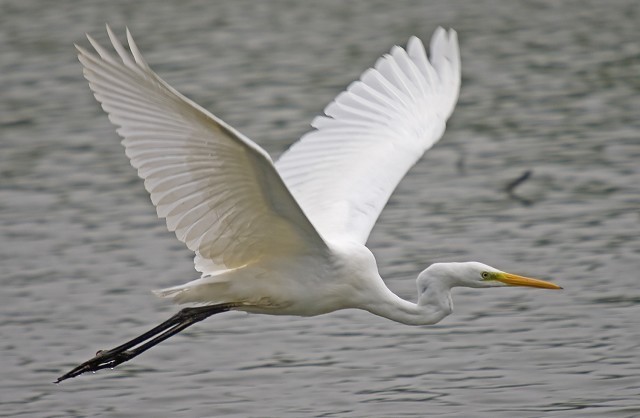
Great White Egret, Chard Reservoir, Somerset & Bristol (Photo: Charlie Fleming)

Spoonbill, Chew Valley Lake, Somerset & Bristol (Photo: Gary Thoburn)

Common Crane, Tyninghame Bay, Lothian (Photo:
Mike Thrower)

White Stork, Point of Ayre, Isle of Man (Photo: John Donnelly)
Spotted Crakes remained at Marazion Marsh (Cornwall), Greylake (Somerset), Grove Ferry (Kent) and Frampton Marsh (Lincolnshire) during the week, while the 30th saw three new birds appear: one was at Bradiford Water (Devon), another was inland at Grafham Water (Leicestershire) and the third was found at Minsmere (Suffolk). Another new bird was trapped and ringed in the Lower Derwent Valley (North Yorkshire) on 1st, followed by two more, also trapped, on 2nd. A Corncrake was seen on Fair Isle (Shetland) on 31st and two were on the island on 2nd.
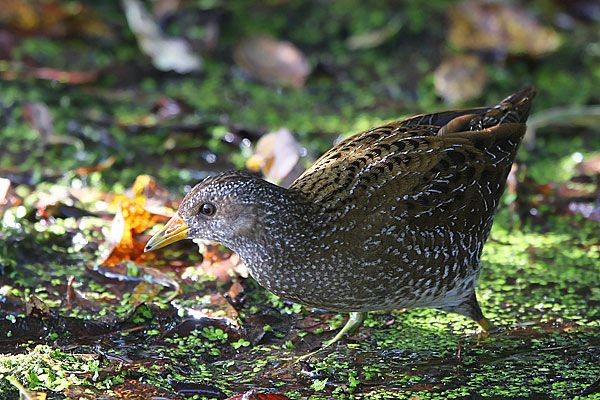
Spotted Crake, Greylake RSPB, Somerset & Bristol (Photo: Rob Laughton)
A juvenile drake Blue-winged Teal arrived at Titchfield Haven (Hampshire) on 28th, relocating to the IBM Lake in Portsmouth on 31st. This bird would have been very popular with county listers, being only the fifth for Hamsphire and the first since a four-day female in May 1992. Meanwhile, a Blue-winged or Cinnamon Teal was seen briefly at Manby (Lincolnshire) on 28th. A juvenile Ferruginous Duck was found at Minsmere on 28th and stayed to 30th. Adult drakes remained on Chew Valley Lake (Somerset) and Loch Gelly (Fife) to 2nd, and the latter site was also still host to the drake Ring-necked Duck. In Staffordshire, the drake Ring-necked Duck was still on Westport Lake from 27th–1st. Two drake Surf Scoters remained in Burghead Bay (Moray) until 30th and the same date saw a drake fly north past Flamborough Head (East Yorkshire) — the site has recorded up to five birds this decade. The adult female Hooded Merganser seen last week on the border of North Yorkshire and Cleveland made it into Cleveland proper on 1st, reappearing at Port Clarence, and it was still there on 2nd.
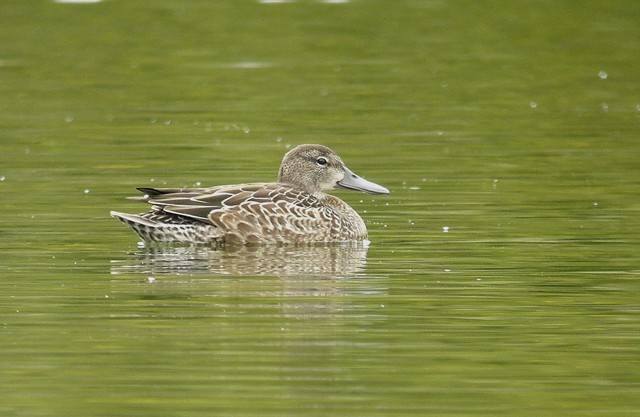
Blue-winged Teal, IBM Lake, Hampshire (Photo: Andy Johnson)
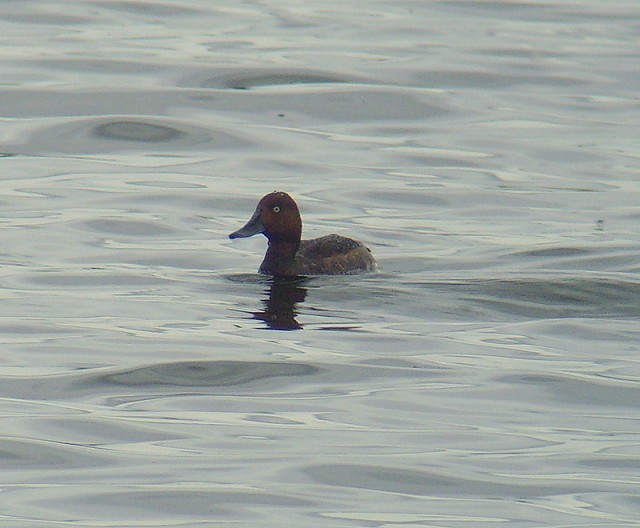
Ferruginous Duck, Loch Gelly, Fife (Photo: John Nadin)

Ring-necked Duck, Westport Lake, Staffordshire (Photo: Malc Wright)
The adult female Snowy Owl remained on Termon Hill, Blacksod Bay (Co. Mayo) until 30th at least. A first-summer male Red-footed Falcon was at Minsmere for half an hour or so on the afternoon of 30th — perhaps the Hickling bird drifting slowly south? An introduced White-tailed Eagle was still at Loch of Strathbeg (Aberdeenshire) throughout the week.
One of the expected fallouts of the first major Atlantic low to hit Ireland and Britain this autumn was the arrival of some Nearctic shorebirds and, sure enough, a few did make landfall this week. Two American Golden Plovers appeared on 29th, one on the Swords Estuary (Co. Dublin) and the other made it to Bornish on South Uist (Outer Hebrides), the latter bird staying to the following day. A juvenile Spotted Sandpiper was found on Tiree (Argyll) on 31st, a juvenile Baird's Sandpiper was at Black Rock Strand (Co. Kerry) on 30th–31st and another was at Carrahane Strand (also in Kerry) on 1st. Still in the same county, one of two juvenile Semipalmated Sandpipers to appear on 31st was found at Smerwick Harbour; the other appeared at Inchydoney Bay (Co. Cork). Both birds were still present on 1st. A flock of six Buff-breasted Sandpipers flew over the car park at Bridges of Ross on 29th while Black Rock Strand scored two juveniles on 31st. One remained at Tacumshin (Co. Wexford) to 29th and a juvenile was seen on Cape Clear Island on 31st. English Buff-breasts were seen on Tresco and Bryher (Scilly) on 28th–29th and, in Norfolk, Cley's second of the autumn appeared on 29th.
The adult Wilson's Phalarope at Martin Mere (Lancashire) was still present to 29th while the Lesser Yellowlegs at Porth Hellick Pool, St. Mary's (Scilly) was last seen on 28th. The bird at Aberlady Bay (Lothian) was still present to 1st at least. A dozen or so Pectoral Sandpipers included three birds at Ballyconnelly (Co. Galway) on 2nd, three birds in County Kerry (including two together at Ferriter's Cove) and one or two birds in Nottinghamshire (at Meden Vale on 27th and Lound GPs on 31st).

Wilson's Phalarope, Martin Mere WWT, Lancashire (Photo: Michael Foley)

Lesser Yellowlegs, St. Mary's, Isles of Scilly (Photo: Martin Goodey)
It wasn't just shorebirds from the west that made the news this week though. An adult Pacific Golden Plover was at Loch a'Phuill, Tiree (Argyll) on 30th and 1st and a "Lesser Golden Plover" was seen at Myroe Levels in Derry on 29th. A Marsh Sandpiper was reported at Levington Creek (Suffolk) on 31st and a Kentish Plover was at Pegwell Bay (Kent) on 27th. Eight Dotterel included two over Stone Creek (East Yorkshire) on 31st and lingering singles at Hatfield Moors (South Yorkshire) and Sandwich Bay (Kent). As well as the previously mentioned juvenile Red-necked Phalarope at Pendeen, last week's juvenile lingered at Keyhaven Marshes (Hampshire) to 27th and another juvenile was seen off Folkestone (Kent) on 29th.

Dotterel, undisclosed site, Kent (Photo: Tonyf)
A putative third-summer American Herring Gull was at Timoleague (Co. Cork) on 28th. Ring-billed Gulls were seen in counties Clare, Galway and Dublin, along with two singles in Cornwall (at Loe Pool and St. John's Lake) while the adult was again at Westcliff-on-Sea (Essex). Two Glaucous Gulls and a single Iceland Gull were seen this week (in Cornwall, Galway and Forth respectively). In Oxfordshire, a first-summer Caspian Gull was at Farmoor Reservoir on 1st. Staying with Farmoor, aside from the White-winged Black Tern playing second fiddle to the American visitor there this week, a further three juveniles were found this week: singles were at Hornsea Mere (East Yorkshire) and Woodhorn Flash (Northumberland) on 27th and one was found at Loch of Strathbeg on 29th.
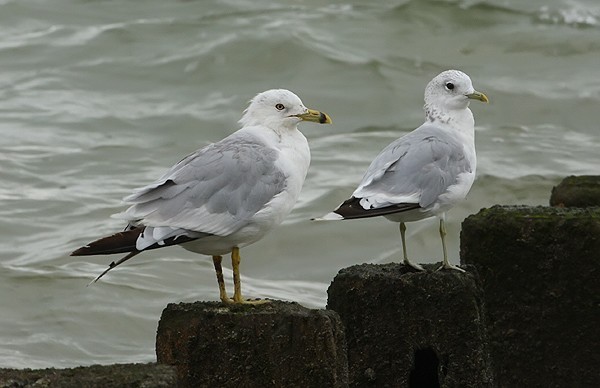
Ring-billed Gull (left), Westcliff-on-Sea, Essex (Photo: Steve Arlow)
Loch of Strathbeg was also host to a juvenile Citrine Wagtail on 28th and another was at Marazion Marsh (Cornwall) from 29th–1st (after a probable was reported there on 26th). On Jersey, a Tawny Pipit was at Noirmont Point on 30th. At least 12 Wrynecks were seen this week including three birds in Devon (at Beer on 29th–1st, Prawle Point on 29th and Slapton — trapped and ringed — on 30th). At least four Wrynecks were seen on mainland Shetland (with another on Fair Isle) and an inland bird remained at Witcombe Reservoir (Gloucestershire) until 27th. A Hoopoe was in the cemetery at Margate (Kent) on 29th and a Golden Oriole was seen in Crewe (Cheshire) on 1st.

Citrine Wagtail, Marazion, Cornwall (Photo: Alex Mckechnie)

Wryneck, Witcombe Reservoir, Gloucestershire (Photo: Jon Mercer)
A juvenile Woodchat Shrike was found at Pleinmont (Guernsey) on 29th, where it remained until 31st. Red-backed Shrikes included two or three birds on Fair Isle, while the juvenile was still at Dungeness (Kent) for much of the week. A male Red-backed Shrike was at Pipewell (Northamptonshire) on 30th.

Woodchat Shrike, Pleinmont, Guernsey (Photo: Chris Bale)
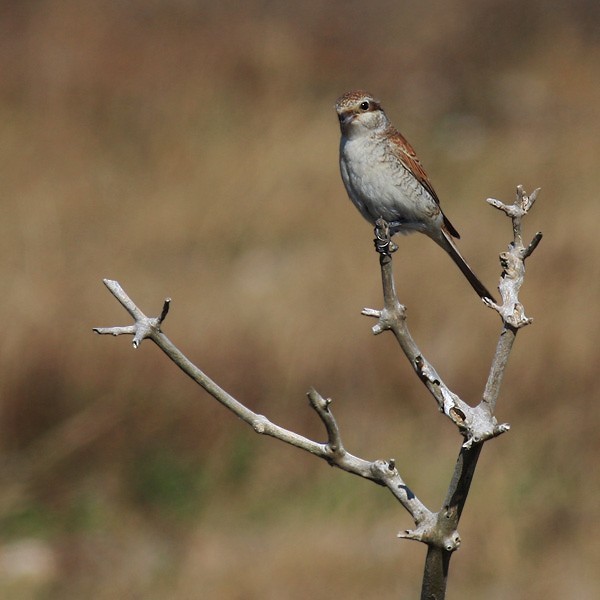
Red-backed Shrike, Dungeness RSPB, Kent (Photo: Brian Harper)
Leading the way with warblers this week was an Arctic Warbler, trapped and ringed at Landguard (Suffolk) on 1st. Only the fourth for the county, this Arctic Warbler was the first seen in the county since September 2000. The bird was still present on 2nd. In Powys, an Aquatic Warbler was trapped at Llangorse Lake on 28th. Half a dozen Icterine Warblers included a report of two birds at Dunsby Fen (Lincolnshire) on 30th, one of which remained to the following day. One or two were noted on Fair Isle during the week and another was at Prawle Point on 31st. The only Melodious Warbler was trapped and ringed at the Observatory garden on Portland (Dorset) 31st. Shetland claimed six of the week's seven Barred Warblers, including two on Fair Isle on 27th (two others were also found on Shetland the same day); the exception was on North Ronaldsay (Orkney), also on 27th.

Arctic Warbler, Landguard NR, Suffolk (Photo: Sean Nixon)

Barred Warbler, Scatness, Mainland, Shetland (Photo: Steve Minton)
A Shore Lark was at West High Down (Isle of Wight) on 29th and it transpires that it was first seen there on 11th August. Rather more expected as early autumn unfolds are Rose-coloured Starlings, and two were seen this week: one was near Trewellard (Cornwall) on 31st and another arrived at Portland on 1st. An Ortolan Bunting was at Flambrough Head (East Yorkshire) on 1st while single Common Rosefinches were at Norwick, Unst (Shetland) on 30th and North Ronaldsay and Fair Isle on 1st. The review ends with some more Shetland news (albeit a little belatedly) — a male Two-barred Crossbill was at Levenwick, Mainland on 26th August.
Photo of the Week

Common Kestrel, Chouet, Guernsey (Photo: Chris Bale)
Chris Bale is one of a small group of photographers who send us a stream of top-quality bird images from the island of Guernsey. Chris's images regularly feature in our weekly Notable Images and it was only a matter of time before a Photo of the Week followed. Perhaps surprisingly, this is also the first time a Common Kestrel has featured in a PotW. In this case, a handsome male Kestrel is pictured in ideal lighting with its unfortunate prey perfectly displayed. Chris managed to get this excellent shot on his way back to his car after a "fruitless and somewhat disappointing day", a situation that will be familiar to many bird photographers!

Reed Warbler, undisclosed site, Lancashire (Photo:
David Cookson)
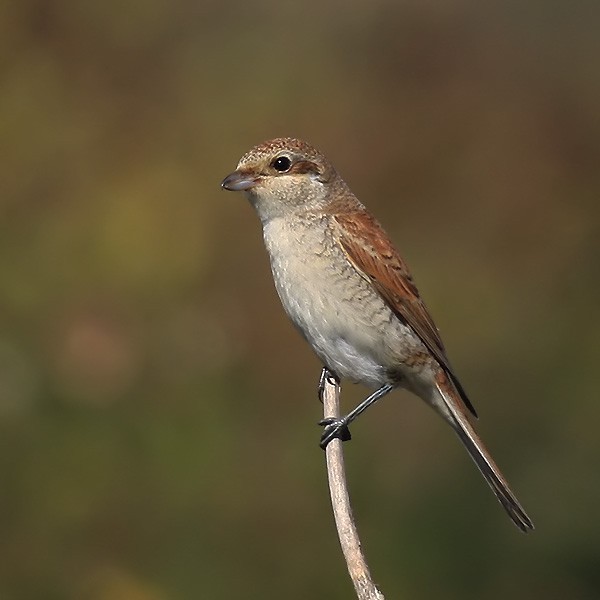
Red-backed Shrike, Dungeness RSPB, Kent (Photo:
Brian Harper)

Swallow, East Walton, Norfolk (Photo:
Stephen Durrant)

Common Kingfisher, undisclosed site, Herefordshire (Photo:
Chris Grady)

Eider, Peel, Isle of Man (Photo:
Sean Gray)

Short-eared Owl, undisclosed site, Lancashire (Photo:
David Moreton)

Common Whitethroat, Minsmere RSPB, Suffolk (Photo:
Jon Evans)
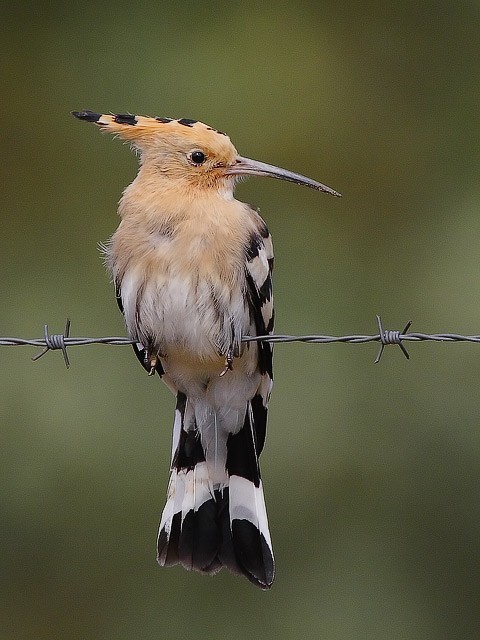
Hoopoe, Spain (Photo:
Steve Fletcher)

Kittiwake, New Brighton, Cheshire (Photo:
Richard Steel)

Magpie, North Wirral, Cheshire (Photo:
Richard Steel)

Green Sandpiper, Cley Marshes NWT, Norfolk (Photo:
Kevin Du Rose)

Common Redshank, Salthouse, Norfolk (Photo:
David Whistlecraft)
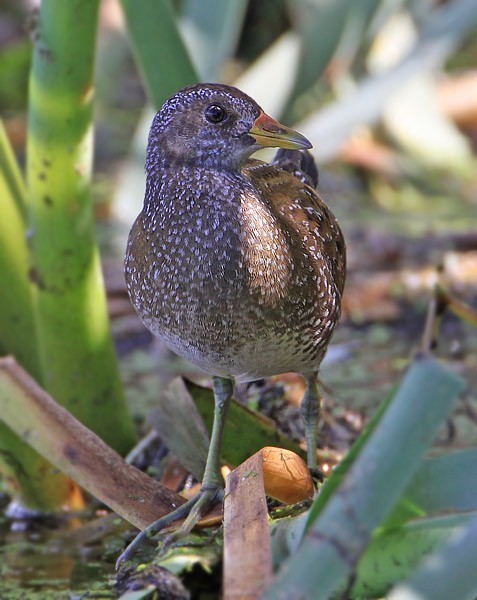
Spotted Crake, Greylake RSPB, Somerset & Bristol (Photo:
Gary Thoburn)

Wood Pigeon, Torr Reservoir, Somerset & Bristol (Photo:
John Hansford)

Marsh Harrier, Cley Marshes NWT, Norfolk (Photo:
Chris Cook)

